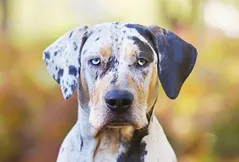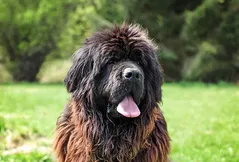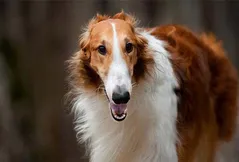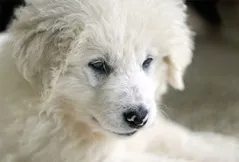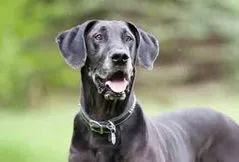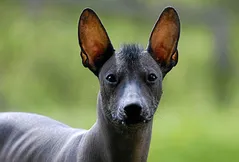
Xoloitzcuintli
Be called the first dog of the Americas, the usually hairless Xoloitzcuintli is exotic, interesting, and clever.
Overall Status
| Height | 14 to 18 inches (Miniature) |
| Temperament | Loyal, Alert, Calm |
| Weight | 15 to 30 pounds (Miniature) |
| Life Expectancy | 12 to 14 years |
| Coat Color | Black, Brindle, Brown, Gray, White |
| Barking Level | When Necessery |
Quick Factors
| Playfulness | |
| Dog Friendly | |
| Exercise Need | |
| Grooming Needs | |
| Strangers Friendly | |
| Family Affectionate |
Daily Care
Grooming Tips
Xoloitzcuintlis are low-maintenance dogs in terms of grooming. The hairless variety should not be over-bathed or over-moisturized, because this can cause acne or other skin infections. Most owners bathe their Xolos only about once a month.A light application of moisturizing skin lotion after a bath can be helpful to keep their skin supple, but it should not be overused. Lightly-colored Xolos may need additional grooming and more frequent application of sunscreen to protect their skin from sun damage.Shedding is not a problem with the hairless variety of Xoloitzcuintlis. Even powder-puffs only shed moderately. Powder-puff Xolos require no more brushing or combing than any other moderately coated breed. Nails should be trimmed and teeth should be cared for in the same fashion as for most other breeds.
Exercise Tips
To keep boredom at bay, you’ll need to keep your Xoloitzcuintli engaged both mentally and physically.Bored Xolos may entertain themselves in ways you don’t find acceptable.You’ll need to walk your Xolo daily to keep mischief at bay. Indoors, always make sure a rousing play time to help release some of his energy.The great thing about the Xoloitzcuintli is that they can live in pretty much any kind of house, big or small. As long as they get enough exercise, these dogs are happy and adaptable. As long as you’re involved in the activity at hand, they will gladly participate.
Feeding Tips
The Xoloitzcuintli should be fed a diet of high-quality food. The breed is partial to fruits and vegetables, so feel free to liberally add these to your dog’s meal. If you are feeding your dog meat, it should be low in fat. Commercial dog food is also acceptable, even though these dogs often have fewer teeth than their canine counterparts.Any diet should be appropriate to the dog’s age (puppy, adult, or senior). Some dogs are prone to gettingoverweight, so watch your dog’s calorie consumption and weight level.Treatscan be an important aid in training, but giving too many can cause obesity. Learn about whichhuman foodsare safe for dogs, and which are not. Check with your vet if you have any concerns about your dog’s weight or diet.Clean, fresh water should be available at all times.
Health Tips
Most of the Xolo’s health concerns are due to its lack of hair. In the summer, this dog is susceptible to sunburn, so he’ll need protection such as a shirt or sunscreen. In the winter, he’ll need protection from the cold – a sweater, jacket and boots will help protect him.As well, the Xolo should not be overly bathed or rubbed with lotion. This causes acne and other infections in the pores. Another interesting health fact about Xoloitzcuintlis is that the breed has fewer teeth than most other dogs – they are often missing their premolars and bicuspids.
Trainability
Because this is an intelligent breed, expect your Xoloitzcuintli to catch onto lessons easily. This is a dog that needs to be trained throughout his life – they have a quench to learn! Start training sessions while they are young and keep it consistent.Don’t let your Xolo take over the lessons, keep them interesting and engaging. Rewards and praise go a long way with Xolos, while negativity and yelling will get you nowhere. Make training a family affair so that everyone knows how to properly handle and treat your Xolo.Housetraining may prove to be a challenge. Crate training will come in handy, as the Xoloitzcuintli likes a clean living space.
History
Xolos are national treasures in Mexico, with a history that goes back at least 3,000 years. Mentions of these “strange hairless dogs” appear in the journals of Columbus and other European explorers. Ancient Aztecs named the breed for their dog-headed god Xolotl. Xolos were considered sacred by the Aztecs and often were sacrificed and buried alongside their owners to serve as protective guides to the next world. In modern times, Xolos are dedicated to watchdogs and companions.

